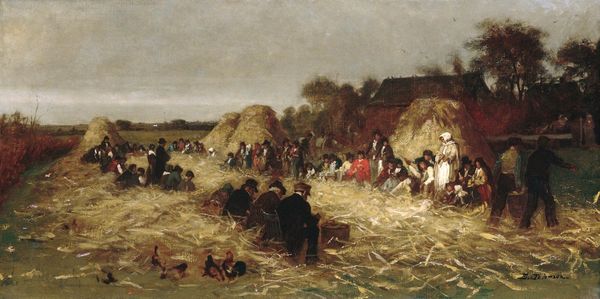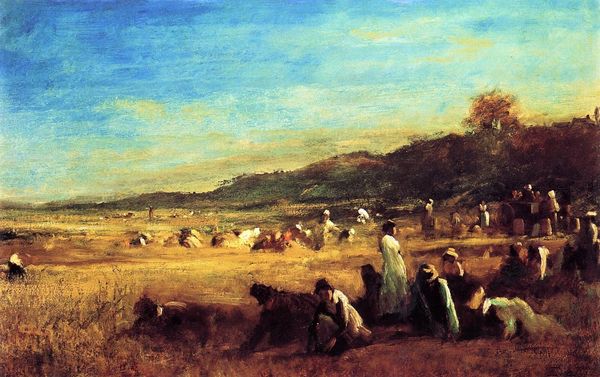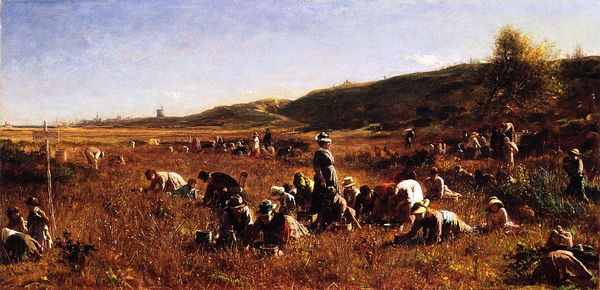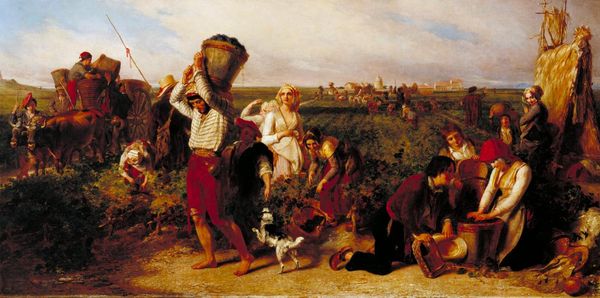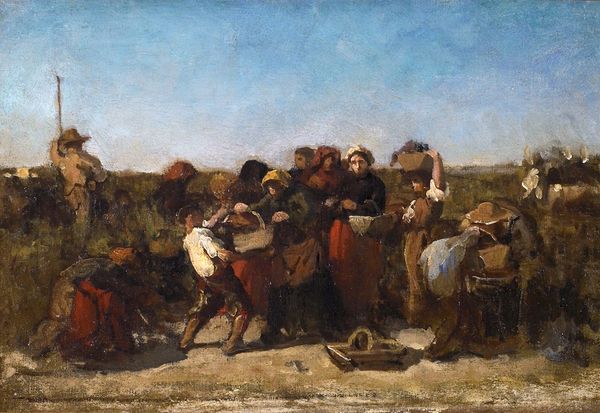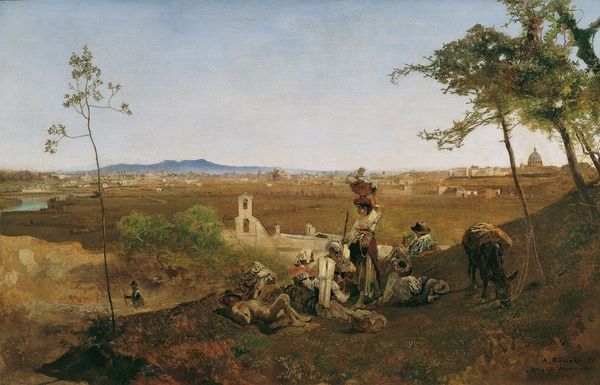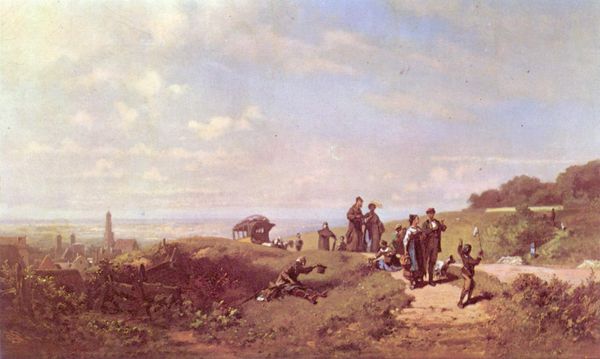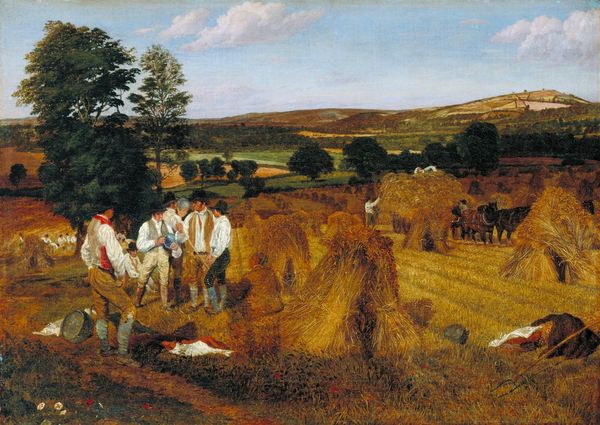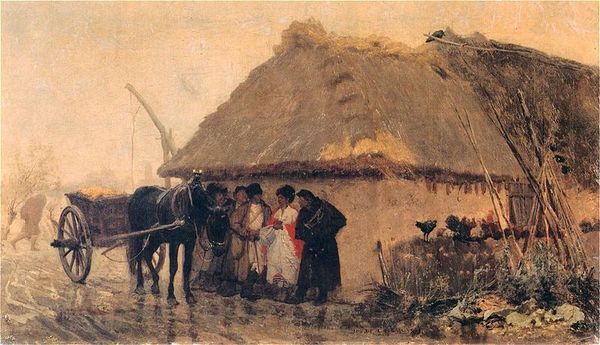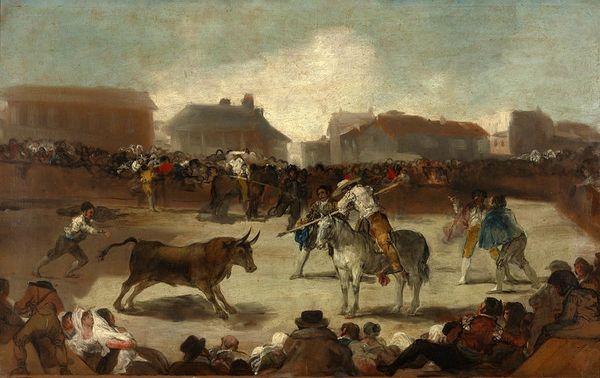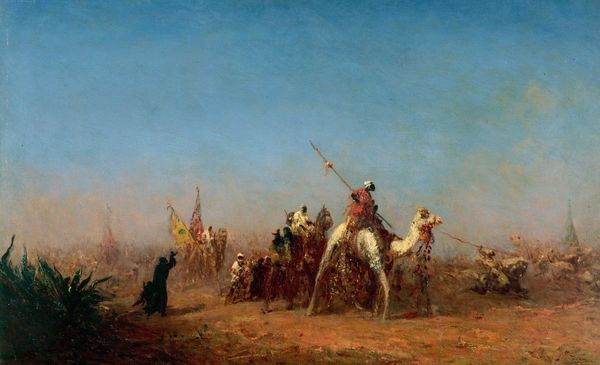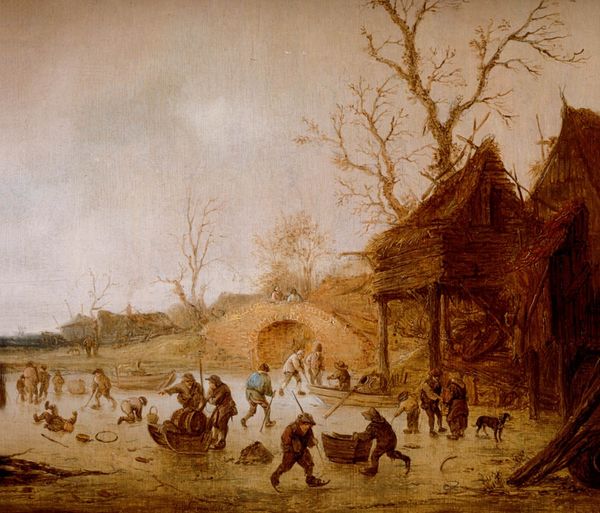
Copyright: Public domain
Curator: Let’s turn our attention to Eastman Johnson’s "Husking Bee, Island of Nantucket" from 1876. The scene depicts a group of people gathered in a field. My first thought? Straw. Piles and piles of golden straw. Editor: Indeed, the texture seems incredibly palpable, doesn’t it? The physical reality of farm labor practically leaps out from the canvas. It speaks to the cyclical nature of agrarian life. We can think of that straw as representing hard work, communal effort and the economic foundation of the island. Curator: Agreed. Beyond the materiality, there's this striking image of communal gathering. You see, a "husking bee" wasn’t just about getting corn ready; it was a social ritual. Symbolically, this work unites the group through the bounty, revealing ties between nature, culture, and community. What emotional symbols strike you about it? Editor: Well, the artist deliberately positions people of varying social statuses. Note the African Americans at the painting's edge alongside white families. Consider this moment and Eastman Johnson’s positioning. Could it speak to Reconstruction-era realities – integration alongside a persistence of social divides? Or perhaps suggest a shared labor uniting otherwise distinct groups? Curator: You know, it's important not to romanticize the labor itself. While the painting exudes a certain golden-hued nostalgia, we must acknowledge that agricultural work was, and remains, demanding and tied to material conditions such as land ownership, weather, market prices, and racial disparity. And Eastman Johnson had connections with the wealthy, which would influence the vision on view. Editor: That’s true. But let’s not forget, the symbolic resonance. Note the light, how it bathes some figures almost like halos. The imagery points towards some idyllic view, perhaps commenting on social and economic tensions within a quickly evolving America. The communal imagery is strong and enduring here, regardless of context. Curator: It’s precisely this dance between what is shown – the cooperative labor, the glowing fields – and the unsaid – class, race, access – that creates this potent narrative of rural existence. It’s the image's success at masking reality that reveals uncomfortable truth. Editor: A very astute insight. I have now observed some of those visual contrasts myself. Curator: So much richness emerges from an attention to both image and object here!
Comments
No comments
Be the first to comment and join the conversation on the ultimate creative platform.
